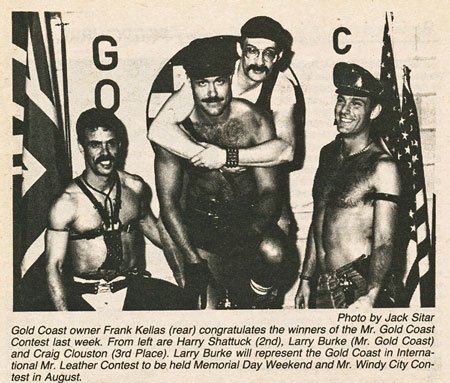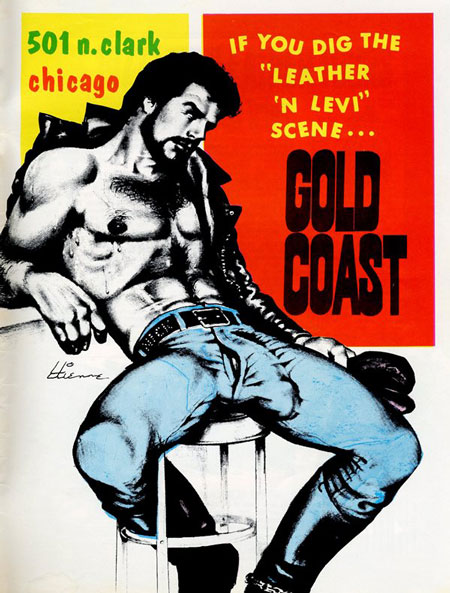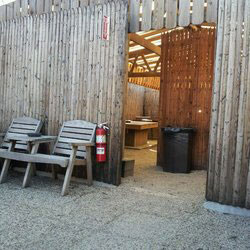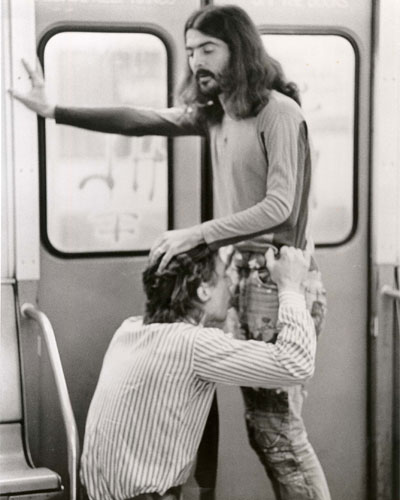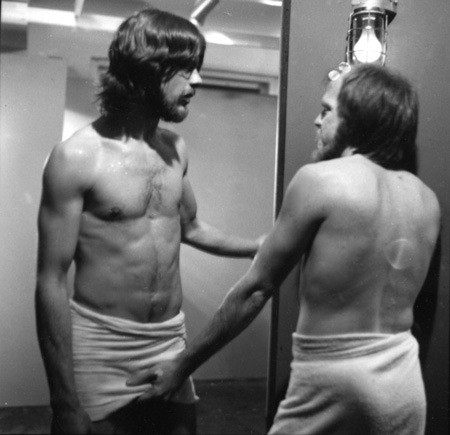

It started in Chicago, as long ago as 1972 (only a few years after the Stonewall revolutionary event), on a pool table at the Gold Coast Bar. The first leather contest. The winner was John Lunning.
Chuck Renslow, now a legendary figure, was the driving force in the development of the whole gay leather culture. After this event, he soon discovered that one way to put a public face on what was going in the backrooms and other shadowy places was by founding what some claim was (and still is) a “leather beauty contest.” Think: kind of a Mr. America take-off but add bdsm-related gear and activities; anything to grab the audience's attention (and cocks). In fact, one anecdotal source claims that at the first contest “slaves” were dragged onto the stage.
Soon the contest became so popular that it outgrew the bar, and in 1979 the first official International Mr. Leather contest occurred at a local hotel.
A dozen candidates in full leather and swimwear (changed to jockstraps in later years), paraded before an audience of about 300 men.
David Kloss, an oil rig worker (now that's once macho occupation!) representing The Brig bar in San Francisco, won the first title.
According to Jack Fritscher in the September 1979 issue of Drummer Magazine:
“The other men, daring to put their pecs and ass on the world’s toughest Chorus Line, were: Terry Hunter, Carol’s Speakeasy, Chicago; Reg Simpson, RR, Miami; Donald Rahn, Foxhole, Denver; Stan Masterson, Landmark, Daytona Beach, FL; Daan [sic] Jefferson, Gold Coast, Chicago; Jim Kazlik, Wreckroom, Milwaukee; Harry Shattuck, South Town Lumber Co., Denver; Bill Maggio, Harder Than Hell Productions, Chicago; Jesse Capello [second IML Runner-up], Café LaFitte in Exile/Coral Bar, New Orleans; Durk Dehner [first IML Runner-up who was a Drummer model from Lou Thomas’ Target Studio, and future founder of Tom of Finland Foundation], American Uniform Association, L. A.; Bruce Wachholder, Touche, Chicago; David Kloss, the Brig, San Francisco. The judges were Chuck Gockenmeyer, General Manager of Leatherman Inc, New York; Robert Dunn, Advertising Director, Drummer magazine; Dom Orejudos (Etienne); Tom Gora, In Touch magazine; and Lou Thomas, Target Studio, New York.”
The list above seems a roll call of both men and organizations who have now become iconic in the leather community.
The contestants, Jack Fritscher wrote in the September 1979 Drummer Magazine, typified “the new homomasculinity.”
The seventies were indeed the era of “gay macho,” popularized (and perhaps even satirized in the Village People phenomenon). But rather than just thinking of it as an era of “guys gone wild,” one also needs to understand that also during this time guys into leather/bdsm were establishing their own communities. The seventies saw the foundation of the Chicago Hellfire Club (its first Inferno event took place in September 1976 to celebrate the fifth anniversary of the Club). Other organizations that began in this period was M.A.F.I.A. (a club for guys into fisting) and Rodeo Riders, a social group for guys who enjoy sex, gear, and each other in a variety of social settings. These three clubs are still going strong now!
Chicago, with is unique mix of Midwestern communal values and gritty individualism, apparently was the ideal place for this movement to take shape.
Thanks to jackfritscher.com and the Leather Archives & Museum for much of the material in this blog.
If you're in or traveling to Chicago for this year's IML, don't miss Men's Room at the Bijou, presented by the Leather Archives, on Saturday May 23!




 All those celebrity gossip sites had heard rumors of a secret wedding, but Suzanne Sommers confirmed it: yes, the soft rock icon of the 1970s had married his longtime manager, Garry Kief.
All those celebrity gossip sites had heard rumors of a secret wedding, but Suzanne Sommers confirmed it: yes, the soft rock icon of the 1970s had married his longtime manager, Garry Kief.

